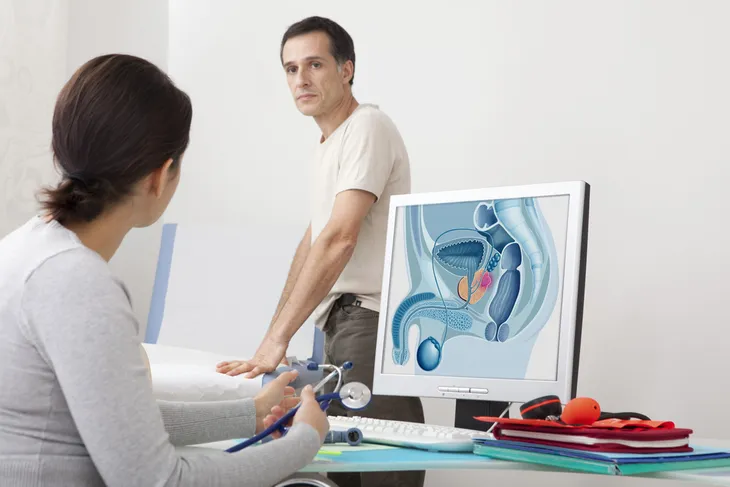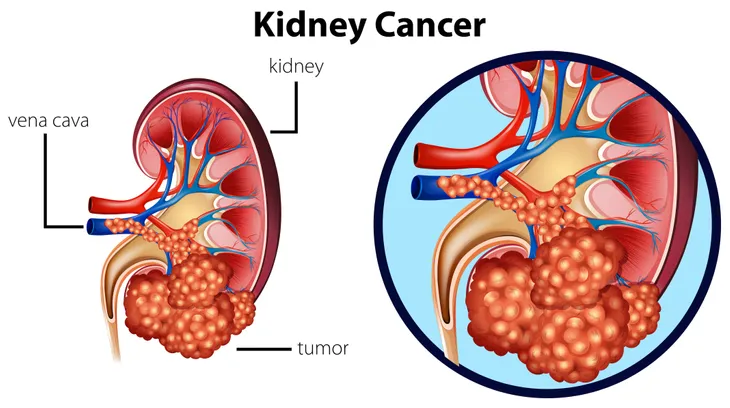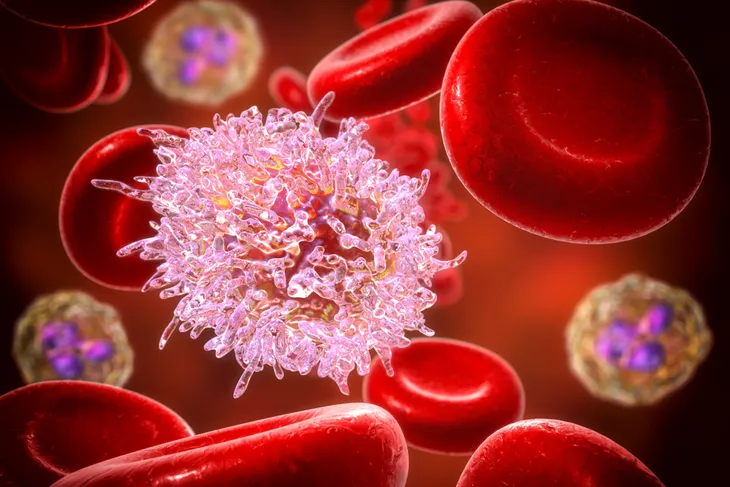Cancer is characterized by the uncontrolled growth and spread of abnormal cells. Cancer may be caused by genetic mutations, as well as environmental and lifestyle factors. Environmental and lifestyle factors that may increase the risk of developing cancer include smoking, heavy alcohol use, obesity, lack of exercise, unhealthy diet, and exposure to pollution. Most cancers develop in older individuals.
According to the American Cancer Society (ACS), 78-percent of all cancer diagnoses are in individuals 55-years of age and older. Cancer is the second leading causing of death in the U.S. In 2015, approximately 1,658,370 new cases of cancer will be diagnosed in the U.S. The top 12 cancers in the U.S. are…
1. Breast Cancer
Breast cancer is the most frequently diagnosed cancer among women in the U.S. The ACS estimates there will be 231,840 new cases of invasive breast cancer diagnosed among women in the U.S. by the end of 2015 and an estimated 40,290 deaths as a result of breast cancer in 2015. It ranks second, only to lung cancer, as a cause of cancer death among women.
Risk factors for breast cancer include female gender, older age, heredity (BRCA1 and BRCA 2 genes), obesity, long-term use of hormone replacement therapy (HRT), radiation to chest before age 30 to treat another cancer, and family history or personal history of breast cancer. Mutations in the BRCA 1 and BRCA 2 genes are the most common cause of hereditary breast cancer. Today, genetic testing is available to detect mutations in these genes. The U.S. Preventive Services Task Force (USPSTF) recommends biennial screening mammography for women aged 50 to 74-years.
2. Lung Cancer
The ACS estimates there will be 221, 200 new cases of lung cancer diagnosed in the U.S. during 2015. Lung cancer is the number one cause of cancer death among men and women in the U.S. There will be an estimated 158, 040 deaths attributed to lung cancer in 2015. There are two major types of lung cancer: non-small cell and small cell. Non-small cell lung cancer is the most common type, while small cell lung cancer grows faster and tends to spread in the early stages of disease.
Overall, the prognosis for lung cancer is bleak with 5-year survival rates for all stages being a dismal 16-percent. Cigarette smoking is the most significant risk factor for lung cancer. Non-smokers can contract lung cancer as a result of prolonged exposure to second-hand smoke. The USPSTF recommends annual screening for lung cancer with CT in adults 55 to 80-years old who have a 30-pack year smoking history.
3. Prostate Cancer
Prostate cancer is the most commonly diagnosed cancer among men in the U.S. and the ACS estimates there will be 220, 800 new cases diagnosed in 2015. The prostate is a walnut-shaped gland below the bladder that is a component of the male reproductive system. Prostate cancer ranks as the second most common cause of cancer death among men, and the ACS estimates there will be 27, 540 deaths attributable to the cancer in 2015.
Risk factors for the development of prostate cancer include increasing age, African ancestry, and family history of the disease. It is a disease of older men with 97% of cases occurring in men aged 50-years or older. The highest rates of disease are found in African-American males. It is a slow-growing cancer and the prognosis is good with 5-year survival rates approaching 100%. Screening for prostate cancer is controversial and done with an annual prostate-specific antigen (PSA) blood test and a digital rectal exam (DRE).
4. Colorectal Cancer
Colorectal cancer is the third most commonly diagnosed cancer in both men and women in the U.S. The ACS estimates there will be 132, 700 new cases diagnosed in 2015. There will be an estimated 49, 700 deaths attributable to colorectal cancer during 2015. Most colorectal cancers begin as clumps of cells called polyps, which form on the inner wall of the colon or rectum and may become cancerous over time. The majority of colorectal cancers are adenocarcinomas.
Risk factors for the development of colon cancer include increasing age, a personal or family history of colorectal cancer or polyps, inflammatory bowel disease (ulcerative colitis or Crohn disease), inherited syndromes (familial adenomatous polyposis), and a low-fiber, high-fat diet. The USPSTF recommends colorectal cancer screening using fecal occult blood testing, sigmoidoscopy, or colonoscopy in adults beginning at age 50-years and continuing until age 75-years.
5. Bladder Cancer
Bladder cancer affects the cells that line the inside of the bladder, a balloon-shaped organ in the pelvis that stores urine. The ACS estimates there will be 74, 000 new cases of bladder cancer diagnosed in the U.S. in 2015. There will be an estimated 16, 000 deaths attributable to the cancer in 2015. There are three major types of bladder cancer: transitional cell, squamous cell, and adenocarcinoma. The most common symptom of bladder cancer is hematuria, or blood in the urine.
Smoking is a well-established risk factor for the development of bladder cancer and increases risk by a factor of 4. Other risk factors include increasing age, male gender, being white, and exposure to certain chemicals used in the manufacture of dye, rubber, leather, and aluminum. The prognosis for bladder cancer is good with 5-year survival rates of 77-percent for all stages combined. There are currently no screening recommendations for individuals at average risk for bladder cancer.
6. Melanoma
Melanoma is the deadliest form of skin cancer. The ACS estimates there will be 73, 870 new cases of melanoma diagnosed in the U.S. in 2015. There will be an estimated 9, 940 deaths attributable to melanoma in 2015. The cancer accounts for less than 2-percent of individuals diagnosed with skin cancer, but accounts for the vast majority of all skin cancer deaths. Melanoma develops in melanocytes, cells in the skin that produce melanin. Melanin is responsible for the color of our skin, eyes, and hair.
Melanomas can develop anywhere on the body and usually arise from moles. Risk factors for melanoma include fair skin, a history of sunburn, use of tanning beds, a weakened immune system, a history of excessive sun exposure, a personal or family history of melanoma, and atypical, large, or numerous (more than 50) moles. The best way to detect melanoma early is to recognize new or changing skin growths.
7. Non-Hodgkin Lymphoma
Non-Hodgkin lymphoma (NHL) is a cancer that affects lymphocytes, one of the five types of white blood cells. Lymphocytes play an important role in the lymphatic system, which plays a large role in immunity. There are many different subtypes of NHL. The ACS estimates there will be 71, 850 new cases of NHL diagnosed in the U.S. by the end of 2015. There will be an estimated 19, 790 deaths due to NHL in 2015.
Individuals of any age may develop NHL. Risk factors for the development of NHL include increasing age, infection with certain viruses and bacteria (HIV and Epstein-Barr virus), medications that suppress the immune system, and certain chemicals such as pesticides. Symptoms of NHL may include enlarged lymph nodes, fever, weight loss, chest pain, night sweats, fatigue, abdominal fullness, and shortness of breath. The prognosis for NHL is fair with 5-year survival rates of nearly 69-percent.
8. Thyroid Cancer
Thyroid cancer is the most rapidly increasing diagnosed cancer in the U.S. The thyroid is a butterfly-shaped gland in the front of the neck that controls metabolism. The majority (75%) of individuals diagnosed with thyroid cancer are women. The ACS estimates there will be 62, 450 new cases of the cancer diagnosed in 2015. Furthermore, there will be 1, 950 deaths attributable to thyroid cancer in 2015.
Risk factors for thyroid cancer include female gender, a history of an enlarged thyroid (goiter) or nodules, exposure to excess levels of radiation, a family history of thyroid cancer, and certain inherited genetic syndromes familial medullary thyroid cancer, familial adenomatous polyposis, and multiple endocrine neoplasia. A lump in the neck is the most common symptom of thyroid cancer. Currently, there is no screening test recommended for the detection of thyroid cancer. The prognosis for thyroid cancer is excellent with 5-year survival rates at 98-percent.
9. Kidney Cancer
Kidney cancer develops in the tissues or ducts of the kidneys, two bean-shaped organs located behind the abdomen. The most common kidney cancer in adults is renal cell carcinoma. Children may develop a form of kidney cancer called Wilms’ tumor. The ACS estimates 61, 560 new cases of kidney cancer will be diagnosed in the U.S. in 2015. Furthermore, there will be an estimated 14, 080 deaths due to kidney cancer in 2015.
The strongest risk factor for kidney cancer is smoking. Other risk factors include obesity, high blood pressure, chronic renal failure, and occupational exposure to chemicals such as trichloroethylene. Early stage kidney cancer is usually asymptomatic. Late stage kidney disease symptoms may include blood in the urine, fatigue, weight loss, fever, and abdominal pain. Currently, there is no screening test recommended for detection of kidney cancer. The prognosis for the cancer is good with 5-year survival rates at 72-percent.
10. Endometrial Cancer
Endometrial cancer affects the layer of cells forming the lining (endometrium) of the uterus. The uterus is a pear-shaped organ in the female pelvis that houses and nourishes a developing embryo. Endometrial cancer is sometimes referred to uterine cancer. The ACS estimates 54, 870 new cases of endometrial cancer will be diagnosed in the U.S. in 2015. There will also be an estimated 10, 170 deaths due to the cancer in 2015.
Risk factors for endometrial cancer include obesity, menopausal hormone replacement therapy exclusively with estrogen, a history of polycystic ovary syndrome, increasing age, never having been pregnant, hormone therapy (tamoxifen) for breast cancer, and late menopause. Abnormal uterine bleeding, especially in postmenopausal women, may be an early symptom of endometrial cancer. Other symptoms of the cancer may be pelvic pain, pain with urination (dysuria), and pain during intercourse (dyspareunia). Currently, there is no screening test recommended for the detection of endometrial cancer.
11. Leukemia
Leukemia is a cancer of the bone marrow and blood. It mainly affects white blood cells, which help fight infections and maintain immunity. The four main types of leukemia are acute lymphocytic (ALL), chronic lymphocytic (CLL), acute myeloid (AML), and chronic myeloid (CML). The ACS estimates 54, 270 new cases of leukemia will be diagnosed in the U.S. in 2015. Furthermore, there will be an estimated 24, 450 deaths attributable to leukemia in 2015. Leukemia kills more individuals under age 20 than any other cancer.
Risk factors for leukemia include previous cancer treatment with chemotherapy or radiation therapy, Down syndrome, smoking, a family history of leukemia, and exposure to certain chemicals such as benzene and formaldehyde. There is no screening test recommended for the early detection of leukemia. Most types of leukemia respond to treatment with chemotherapy. Survival for leukemia varies dramatically from 25-percent to 84-percent depending on type with respect to 5-year survival rates.
12. Pancreatic Cancer
Pancreatic cancer is one of the most deadly forms of cancer. It develops in the tissues of the pancreas, which is an organ that aids in digestion and regulates glucose metabolism. The ACS estimates 48, 960 new cases of pancreatic cancer will be diagnosed in the U.S. in 2015. There will also be an estimated 40, 560 deaths due to the cancer in 2015.
Risk factors for pancreatic cancer include smoking, obesity, a family history of pancreatic cancer, a personal history of chronic pancreatitis, and diabetes. Detection and early intervention is difficult because the cancer develops rapidly and has no early symptoms. Late stage symptoms may include jaundice (yellowing of the skin and eyes), abdominal pain, nausea, and vomiting. The prognosis for pancreatic cancer is poor with 1-year survival rates of 28-percent and 5-year survival rates of 7-percent.















